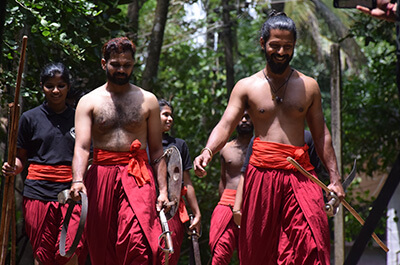Kalaripayattu, the ancient martial art of Kerala, is a true gem of Indian culture. This millennia-old practice is more than just a martial art; it’s a way of life that combines self-defense, physical fitness and a deep connection to history and tradition. In this blog, we’ll explore the secrets of Kalaripayattu, the martial art that has captivated people worldwide.
The Origin and History of Kalaripayattu
Kalaripayattu, often referred to as the “Mother of All Martial Arts,” is believed to have originated over 3,000 years ago in Kerala, a southwestern state of India. The term “Kalaripayattu” can be broken down into “Kalari,” which means battlefield, and “Payattu,” which means practice. It reflects the art’s origins as a combat training system used by ancient warriors.
Legend has it that Lord Parashurama, an incarnation of Vishnu, is the progenitor of Kalaripayattu. He is said to have created this martial art to teach Brahmins how to defend themselves against aggressors.
The Philosophy of Kalaripayattu
Kalari is not just about physical combat; it also embraces a profound philosophy. It promotes a harmonious balance between mind, body and soul. Central to its philosophy are the following principles:
- Strength and Flexibility: The practitioners train rigorously to build both physical and mental strength. The art involves various movements, postures and exercises designed to enhance flexibility and agility.
- Breathing Techniques: Controlled breathing or “Pranayama” is a fundamental aspect of Kalari. Proper breathing synchronizes with movements and enhances focus.
- Self-Defense: Kalari imparts effective self-defense techniques, which can be life-saving skills in today’s world.
- Healing: Kalari includes knowledge of herbal medicine and Ayurvedic techniques, which can be used for healing purposes.
Training in Kalaripayattu
Kalari training is typically divided into different stages, starting with the basic postures and movements. As students progress, they learn weapon-based techniques, such as the sword, staff and spear. The art also emphasizes combat in both armed and unarmed forms.
To truly unlock the secrets of Kalaripayattu, it’s essential to find a qualified and experienced guru or instructor.
Conclusion
Kalaripayattu is not just a martial art; it’s a way of life that offers a unique blend of physical fitness, self-defense and cultural heritage. By exploring its history, philosophy, and training methods, you can begin to unlock the secrets of this ancient martial art, enriching your understanding and appreciation of this timeless practice. Whether you seek self-defense skills, holistic wellness, or a deeper connection to tradition, Kalari has something to offer for everyone.
FAQs
Q: Is Kalaripayattu only for self-defense?
A: Kalaripayattu can be used for self-defense, but it is also a comprehensive fitness system that improves physical strength, flexibility and overall wellness.
Q: Are there any age restrictions for learning Kalaripayattu?
A: Kalaripayattu is suitable for people of all ages. Instructors tailor training programs to suit the individual’s physical condition and goals.
Q: Can women practice Kalaripayattu?
A: Absolutely! Kalaripayattu is inclusive and open to practitioners of all genders.
Q: Is Kalaripayattu still relevant today?
A: Yes, Kalaripayattu is relevant in the modern world. Its physical and mental benefits, as well as self-defense techniques, make it a valuable practice.
Q: How can I find a qualified Kalaripayattu instructor?
A: You’re in the right place. Meet Vipindas Gurukkal, a Kalaripayattu expert with over 29 years of experience. He has learned various forms of Kalaripayattu from renowned gurus and has also mastered Kalari Marma therapy, Kathakali oil massage, Ayurveda, and Yoga therapy. You can find more details about his expertise over here.






Online class plz
You can check out this page